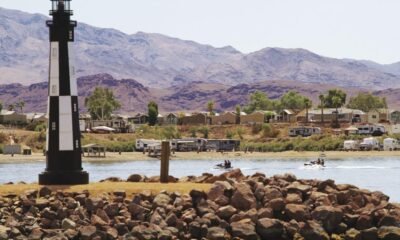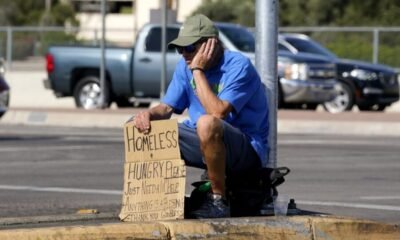Business
Real Estate, Hospitality, and Tourism Ignite Havasu’s Economic Boom

Lake Havasu City continues to flourish, driven primarily by tourism and recreation. According to James Gray, Director of the Partnership for Economic Development, the city’s growth is supported by real estate, construction, healthcare services, and retail sectors. Over the last decade, the population has expanded significantly due to increased developments.
Current modeling data indicates that Havasu’s population exceeds 60,000 residents, with a projection of around 30,000 households. Gray emphasizes that this population growth has positively impacted demand across local businesses, particularly in retail, hospitality, and healthcare sectors.
The median household income in Havasu is $69,117, while average household spending is reported at $68,425. However, the city’s Cost of Living Index (COLI) reached 122.5 in May, illustrating a notably higher cost of living compared to the national average. Gray attributes this elevated COLI primarily to housing costs, which significantly outpace those found in Phoenix.
Investment in infrastructure has been pivotal for Havasu’s economy. Gray outlines several private sector advancements, including the opening of two new branded hotels, which expand lodging options for visitors. Additionally, Havasu Heights’ DL Ranch is contributing to residential growth that may foster new commercial developments.
Key developments also encompass improvements to the city’s internet infrastructure through Allo Fiber, which enhances connectivity for both residents and businesses. The Havasu Riviera Marina has emerged as a major attraction, hosting significant lake events and bolstering recreational opportunities.
Healthcare is another sector benefiting from substantial investments. The Lake Havasu Community Health Center is committing $20 million to construct a new surgery center, expected to create over sixty jobs in the area. This reflects a broader trend toward enhancing healthcare options locally.
Public sector initiatives are also underway, including vital road improvements facilitated by collaboration with the Arizona Department of Transportation. Recent upgrades to State Route 95 aim to increase connectivity and efficiency. Gray further points to a new redundant water well system to enhance water supply reliability and ensure sustainable growth.
Over the past 40 years, the London Bridge Resort has played a critical role in shaping Havasu’s tourism landscape. With a workforce of 250, it significantly influences the local economy. Cal Sheehy, the resort’s Vice President and General Manager, notes that more than 2,500 people are employed in Havasu’s hospitality sector, contributing to the overall visitor experience.
Sheehy describes a rise in international travel to the southwest, drawing increased attention to Lake Havasu. The resort has noticed a resurgence in visitor interest post-pandemic, despite ongoing challenges such as staffing shortages and supply chain disruptions.
Gray reports that Havasu’s labor market has expanded by 17.6% from 2017 to 2024, reflecting a growing economy and increased job opportunities across various sectors. This upward trend signifies a resilient economic environment as the city continues to navigate and adapt to emerging challenges.
















